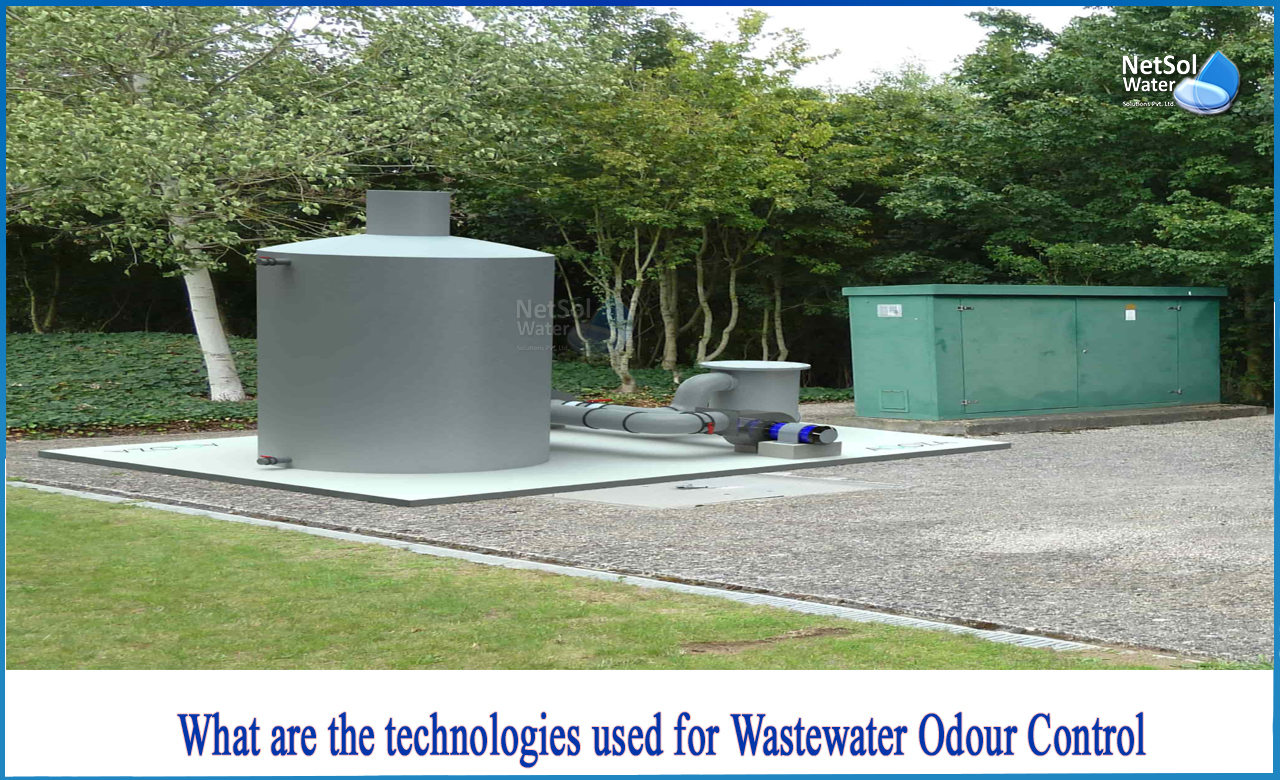What are the technologies used for Wastewater Odour control?
Industrial scents or odours can be hazardous to both the environment and human health, especially when they are released near residential areas. The need for cleaner, odour-free air has prompted the establishment of more stringent laws governing hazardous gas emissions into the atmosphere. As a result, businesses must seek out solutions for odour reduction.
Unpleasant odours can be released by a variety of industrial processes, while some industries are more likely to produce these scents due to the "raw materials" they operate with. Animal products, food, farming, chemicals, and waste management are examples of these industries.
Technologies for odour control in wastewater
There are a variety of technologies available to eliminate scents from the air. The best option is determined by a number of criteria, including the kind of pollutants, the volume or flow of pollutants to be treated, and the concentration of emissions.
These technologies are divided into two categories_
1: Vapor-phase technologiesare used to control odorous compounds in the air or gas. These technologies are commonly employed in point-source applications including wastewater treatment facilities and pump stations, as well as for biogas treatment. These are extremely successful at preventing fugitive emissions from vented sources, as well as the odour problems that come with them. These can also be effective in providing appropriate ventilation for occupancy and/or reducing pollutant concentrations to levels that do not pose safety or corrosion issues if substantial amounts of air are vented.
a: Wet-Air Scrubbing: For vapor-phase wastewater odour management, wet air scrubbing is the most adaptable and dependable approach. Almost any water-soluble pollutant can be treated with this method. It is particularly good at removing ammonia, as well as hydrogen sulphide and "organic" aromas.
b: Biofiltration: A range of biodegradable, water-soluble pollutants can be treated using biofiltration technology. On the surface of an organic material such as compost, mulch, or peat, odour pollutants are solubilized from the vapour phase into an aqueous phase in a biofilter. On this media, the chemicals are then destroyed by the bacterial community. Hydrogen sulphide, organic sulphides, and mercaptans are sulphur-based odour molecules that biofilters are highly good at eliminating but these are ineffective at removing nitrogen-based chemicals like ammonia and amines.
c: Carbon Adsorption: The air stream is passed over a bed of adsorbent (carbon) in a carbon adsorption device, and the odour-causing compounds are attracted to and cling to the adsorbent's surface. This is the most basic of the three wastewater odour control systems. There is no continuous chemical feed to the system, and no biological processes are disrupted. Adsorption can be used to treat a wide spectrum of substances. These systems effectively remove hydrogen sulphide and comparable sulphur-based compounds, but ammonia and other nitrogen-based compounds are not adequately handled. Activated and impregnated carbon systems, as well as others, can be employed alone or in combination with Reverse Osmosis to remove a wide range of impurities.
2: Liquid-phase technologiesare used to control odorous compounds in liquid effluent. These are commonly employed in collecting systems where odour and corrosion control are priorities, and/or when multiple point odour control is a goal. These methods clean a wastewater stream to prevent the discharge of odour- and corrosion-causing chemicals into the environment. The majority of liquid-phase technologies require the addition of a chemical to the wastewater to either prevent the formation of odorous chemicals or react with them once they have formed. The most typical application of liquid-phase treatment is in wastewater collecting systems, not treatment plants.
a: Iron Salts: These are used to oxidise and/or precipitate dissolved sulphide in wastewater. Sulphide precipitates as ferrous sulphide in ferrous salts like ferrous sulphate. Ferric salts, such as ferric chloride, reduce ferric iron to ferrous iron while oxidising some of the sulphide to sulphur. The ferrous sulphide precipitate is formed when the residual ferrous iron combines with dissolved sulphide.
b: Oxidizing Substances: The application of a powerful chemical oxidising agent to wastewater for odour control is known as oxidation. The oxidising agent is used to convert dissolved sulphide to sulphate or sulphur by chemical reaction. The oxidising agent treats a variety of odorous substances in addition to dissolved sulphide.
Other technologies to remove or eliminate odour from wastewater_
1: Thermal oxidation: For eliminating VOCs and solvents, regenerative thermal oxidation is a particularly efficient method. Energy usage may be significant depending on the concentration of VOCs to be removed. However, the heat generated can be put to good use. It can be used for fluxes ranging from 2,000 to 150,000 Nm3 per hour, with VOC concentrations ranging from 0.3 to 10 g/Nm3.
2: Scrubbers: For large flow rates, scrubbers and washing towers are a viable solution. These technologies, however, necessitate greater maintenance by qualified employees due to their intricacy.
3: Biological purification: These are often known as biofilters, and is another system of purification to consider. These systems make use of microorganisms' ability to biochemically oxidise organic and inorganic compounds that contain gases that need to be treated. It is often the most cost-efficient solution while also being quite effective.
What do we offer?
Netsol Water can help you provide technologies for wastewater odour control and assist with your wastewater treatment options or to discuss your specific requirements for re-use and recycle.Make a phone-call at +919650608473 or contact via email at enquiry@netsolwater.com for further consultation or product purchase related query.



